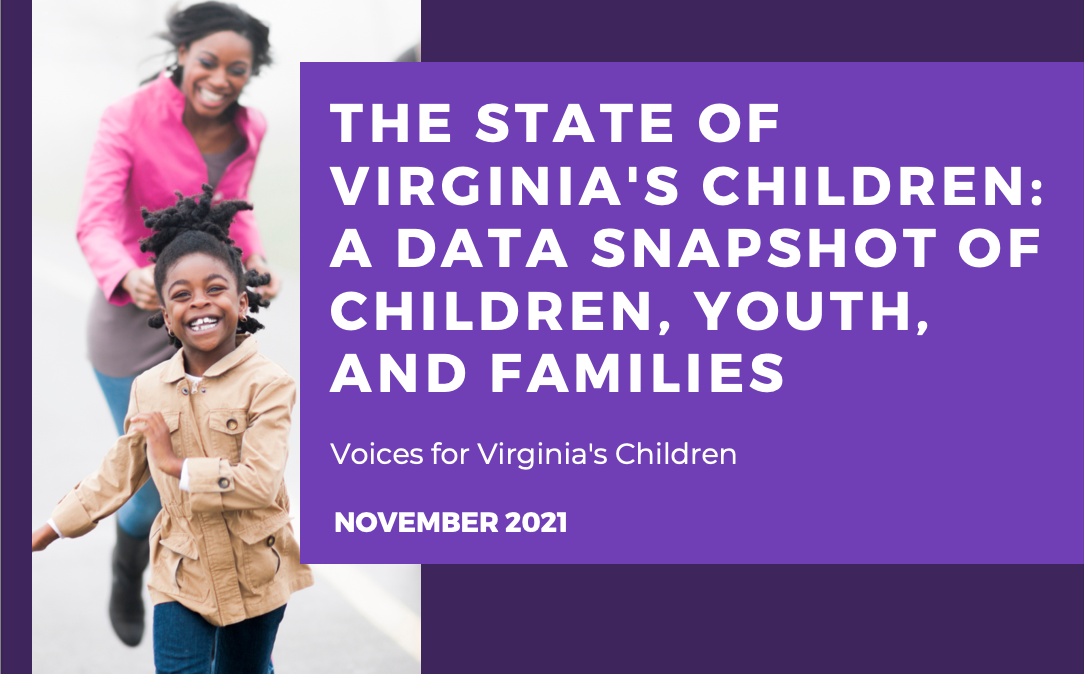

Across the Commonwealth, an increasingly diverse population of children, youth, young adults, and families highlights the need for policies that reduce barriers to services and target the unique needs and experiences of people of color, under-resourced communities, and those living in immigrant families. The pandemic has both created and exacerbated long standing inequities and while access to health insurance and other economic supports provided relief for some families, not all families show signs of a recovery.
The State of Virginia’s Children report highlights some prominent issue areas affecting Virginia’s children, youth, and families. The goal of this report is to define and describe where we are and where we need to go with the most recent data available. Data is necessary for determining the future direction of policies in Virginia. The needs of Virginia’s children can be quite different based on their experiences and identities; this report reveals various disparities and trends that can be used to inform policy objectives that take into account every child, no matter their background.
This unique product summarizes key trends for children, youth, and families in the areas of demographic growth, economic security and mental health. Each section focuses on major findings and elements of each issue area and provides easy-to-understand data visualizations that are accompanied with summarized headlines that suggest what future policies Virginia’s leaders should emphasize. The Demographics page includes data on population, racial diversity, immigration, and language access. The Economic Security page covers data on poverty, poverty by race, and the impact of the COVID-19 pandemic on employment rates. The Mental Health page consists of data on the prevalence of mental health conditions in children and youth, mental health care by race, and the impact of the pandemic on mental health. Graphics are provided to distinctly illustrate each point.
This report can be used by individuals, organizations, policy decision-makers, and state agencies to not only get a picture of what is happening currently, but also to compare state and local trends to see where improvements can be made for children in local communities. Each visualization can be shared individually or grouped together to provide information to interested parties.
Tag Voices for Virginia’s Children in any content shared from this report on social media on Twitter, Instagram, or Facebook.
Included on the Voices for Virginia’s Children website is a source guide defining indicators and going into additional detail for each topic. If you have any questions or concerns, contact Research Director, Lauren Snellings for additional assistance.
Read More Blog Posts